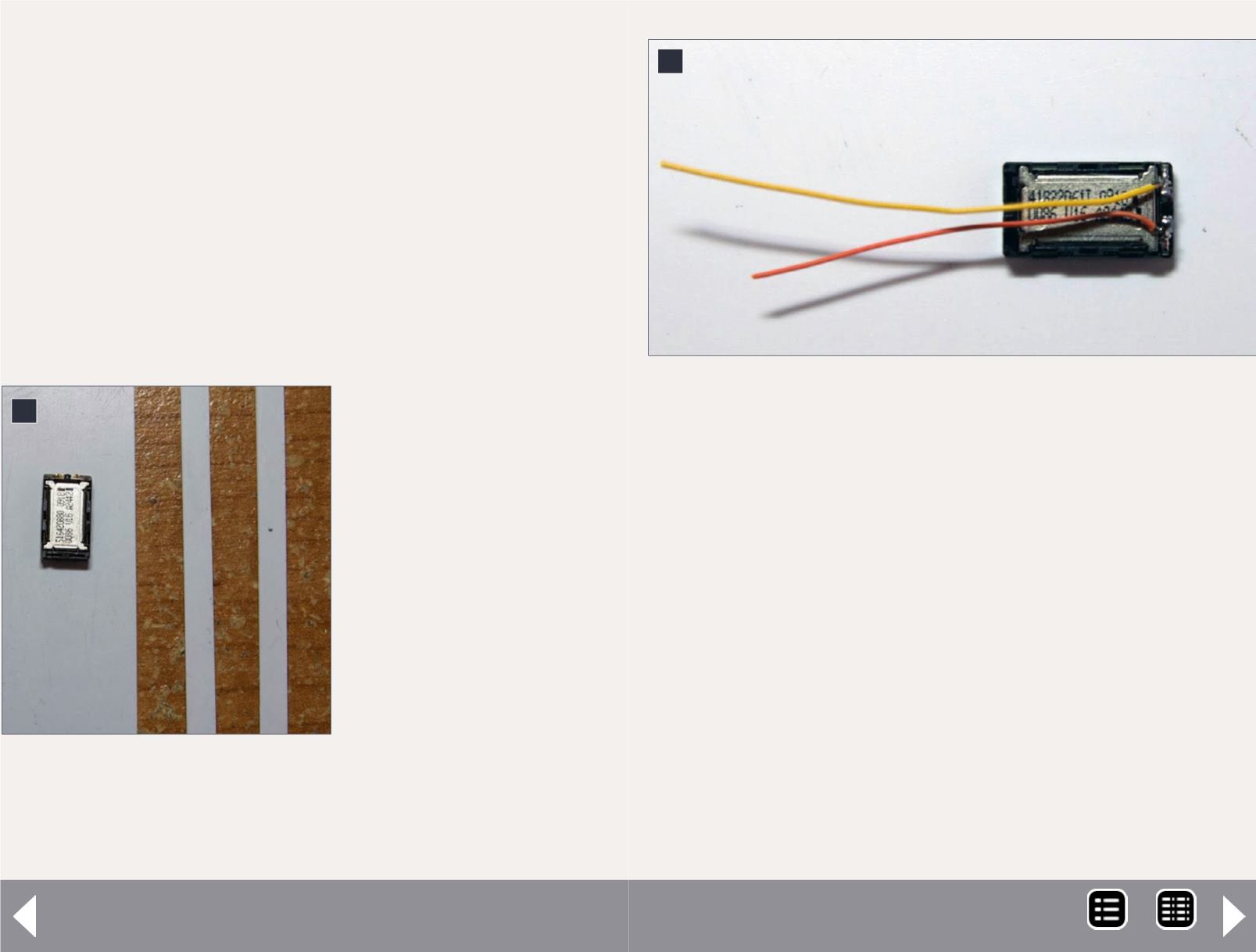
N scale sound - 2
3
3. I solder scraps of wire to the speaker pads. Use
30-gauge or smaller wire.
exceptional performance for its size. Then, there was the ques-
tion of the decoder itself – again, I was limited to 10-11 mm
in width, and probably no more than 25 mm in length to fit a
decoder in a typical N scale diesel. Moreover, I am very picky
about motor control from my DCC decoders; whatever sound
decoder I would use needed to have motor control equal to
the best non-sound decoders. Finally, the sound itself needed
to be top quality, or the whole effort just wasn’t going to be
worth it.
In doing some research on the subject, I came across two
speakers intended as OEM equipment for the cell phone and
tablet markets that seemed to make a sound installation in an
N scale diesel possible. The first was from a company called
Knowles. Their “Fox”
speaker was 9 mm wide by
16 mm long – narrow and
short enough to fit inside
an N scale diesel shell.
The second was from Star
Micronics, which made an
8 mm x 12 mm speaker
that had similar perfor-
mance specifications to
the Fox. The Fox speaker
has since been discontin-
ued and replaced by the
“Wildcat”.
For the decoder, I hap-
pened upon ESU
LokSound’s website and
discovered their Select
Micro line of decoders.
They are 10.6 mm wide by 25 mm long by 3.8 mm high. The
sound samples for various U.S. prototype prime movers
sounded promising, as well. So I decided to try to do a sound
installation in a typical first-generation hood diesel in N scale:
an Atlas RS11, using the Fox speaker and the ESU LokSound
Select Micro.
Prepping the speaker
My previous experiences with sound installations in N-scale
steam tenders had taught me that in order to achieve the
best sound from the tiny speakers we are limited to using, the
speaker should be set in a sealed-box enclosure. While I know
there are installers who disagree, I have never found another
way to get sound even close to what I achieve with a sealed-
box enclosure. So my first step was to build an enclosure
around the Fox speaker. Given its 9 mm width and the typical
2
2. The basic materials: the
speaker and two strips of
styrene cut from a sheet to
5.5 mm wide.
MRH-Dec 2014


